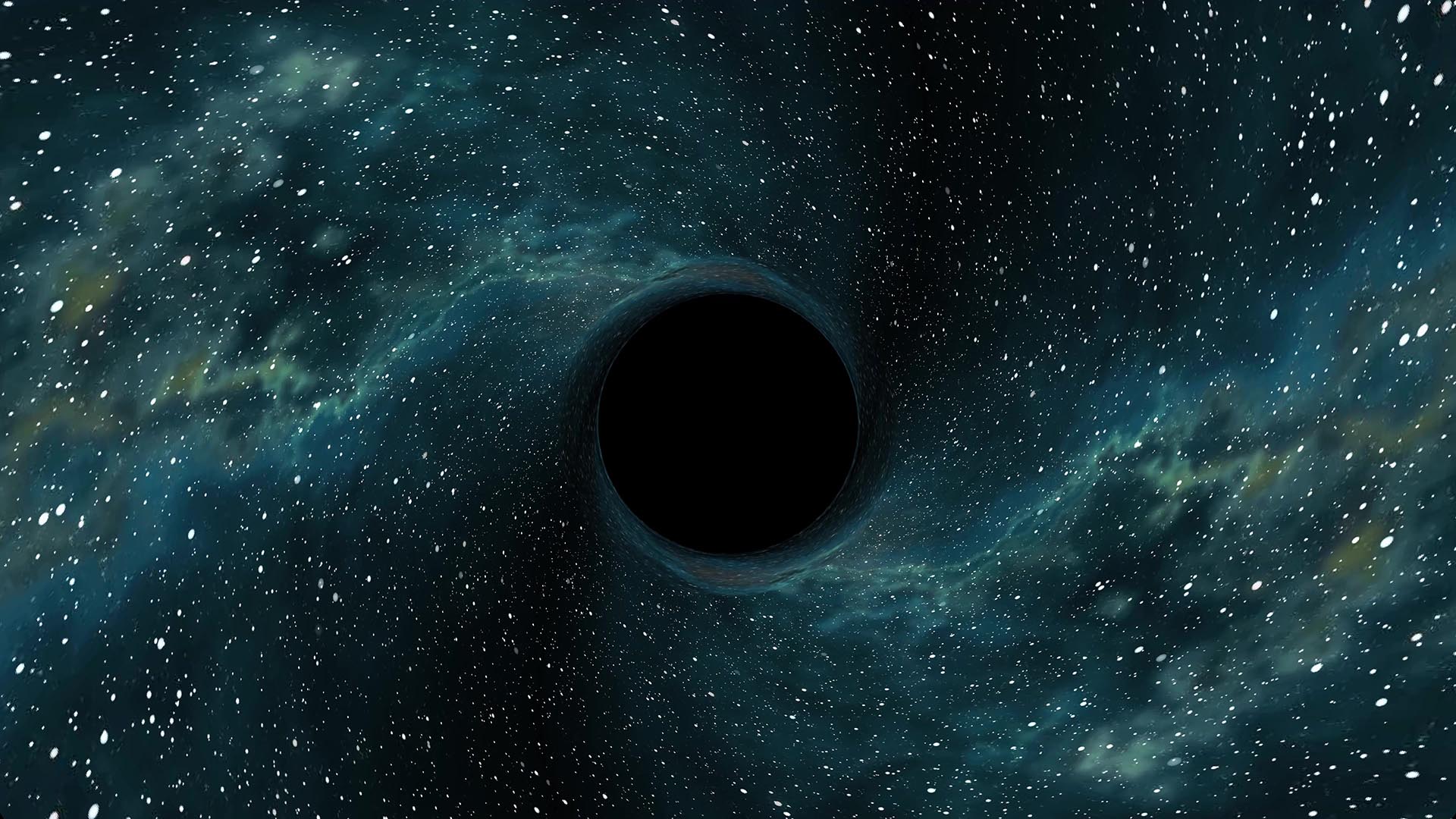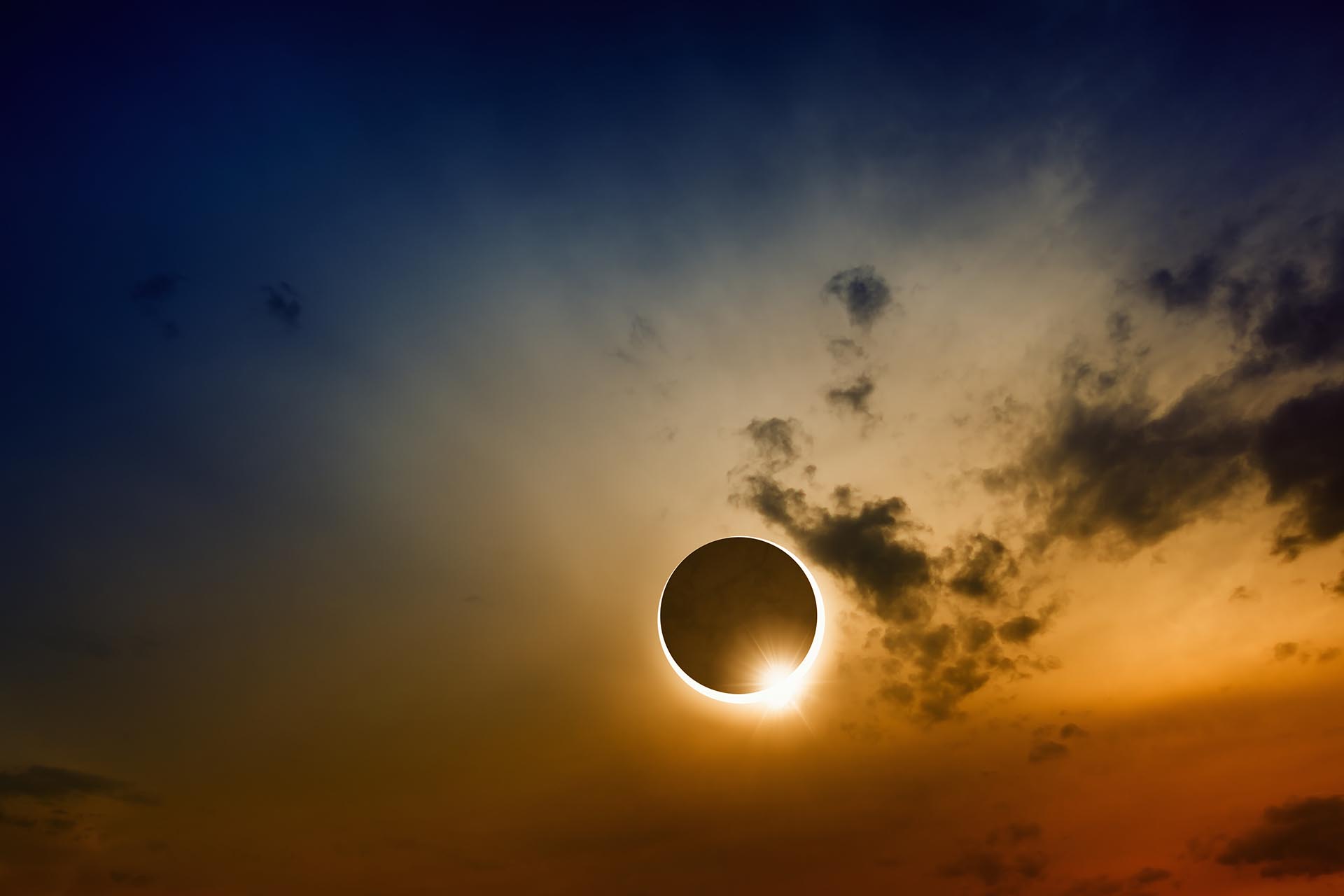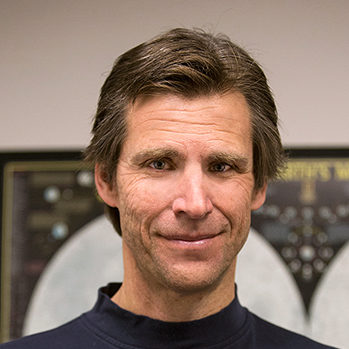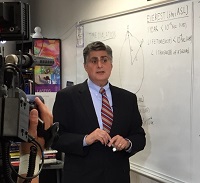Astronomers have discovered ambient ‘noise’ in the universe. Here’s what that means.
A Physics professor breaks down the news that NANOGrav scientists have detected a low-frequency hum passing through our galaxy.

Astronomers everywhere have been astir since news broke in late June that a team of international scientists had discovered a low-frequency hum of gravitational waves permeating the universe. Such gravitational waves are created when a mass moves through space, e.g., when a planet orbits a sun. The larger the mass, the greater the waves.
Until now, scientists had been able to detect only high-frequency waves, which are created by massive astronomical events such as black holes merging. But using a complex measurement system involving pulsars, scientists at the North American Nanohertz Observatory for Gravitational Waves (NANOGrav) picked up on a low-frequency signal of gravitational waves that they’re calling a “cosmic symphony.” The discovery, 15 years in the making, adds to the evidence proving Albert Einstein’s 1916 theory of general relativity.
So what does that mean to the average, nonastrophysicist person? Grant Denn, Ph.D., a Physics professor at Metropolitan State University of Denver, helps us understand.
Break down the science for me. Gravitational waves were proven to exist seven years ago, so this news proves what exactly?
The news is: We’re finally detecting gravitational waves from distant, compact objects — such as black holes and neutron stars — that are orbiting each other or just oscillating through space. These waves make up all the background noise in space, so not just the big events that have happened, which are things like black-hole mergers and can be detected from billions of light-years away, but rather the noise coming from many more compact objects. Anything that has mass and is rotating or orbiting is making gravitational waves, and though we’re probably detecting the closest ones to us within a few billion light-years, there’s residual noise from the very early universe as well.
So before now, we were able to detect one wave related to one specific event, but now it’s more like all the waves from all the events that have happened?
Yes, that’s right. There was a black-hole merger 2 (billion) or 5 billion years ago, and now we’re getting little ripples from that, but there was another one across the universe that happened almost at the same time, and we’re getting ripples from that, too, and these things are happening constantly. We’re getting ripples from all directions. Astronomers have detected them by looking at pulsars and how the pulsar emissions travel through the universe.

How was Einstein able to predict gravitational waves over 100 years before scientists were able to measure them?
When he came up with a general theory of relativity, he essentially said that mass bends space-time and the more mass there is, the more the space-time is bent. The first event that verified the general theory of relativity was an eclipse that happened in 1919. Sir Arthur Eddington went to India to look at stars that were near the sun during a solar eclipse, and when they took images of the stars around the sun, they saw they weren’t in the place that you would see them if you were just looking at them in the night sky. And that’s because the sun does something called gravitational lensing, which basically means that light takes the shortest path available when traveling through space. If space is bent, it has to take a longer path. Since space is curved wherever there’s mass nearby, a lot of these faraway objects are sending out gravitational ripples.
NANOGrav released the software used to produce its data. What does that mean for the scientific community and potentially students at MSU Denver?
Another key to science is replication, so if someone in the Physics Department at MSU Denver decides to start looking into this, we can verify the claims, and a student could be part of that team as well. If there’s an error in the process that was overlooked by the original research group, then others may be able to spot it.
RELATED: Students look to the stars
What types of information can we gain now that we can measure more gravitational waves — for example, about the Big Bang?
For instance, we can we get information about the early universe, which is something we don’t know a lot about. The James Webb Space Telescope has been really good at showing us that the early universe is a lot denser than we thought. If things are denser, then there’s a lot more gravity everywhere. And one thing that gravity does is slow down time. That means that astronomers need to adjust our measurements. We also get information about the number of black holes formed in the early universe. If there were a lot of black holes, that’s interesting to astronomers.

How do gravitational waves impact us on Earth?
Well, they don’t do much to us, but they do make the Earth wiggle a little bit whenever a gravitational wave comes through space-time. That means distance and time throughout space-time get a little longer and a little shorter — they get stretched and compressed in teeny bits. We’re talking about the size of the nucleus of an atom. That’s how well we can detect those gravitational waves with the instruments like LIGO, Laser Interferometer Gravitational-Wave Observatory.
Obviously, this isn’t something that people can perceive with the naked eye. So the million-dollar question: Why should we care?
It’s how the universe works, right? Most of the things we study in astronomy don’t really make much of a difference in our lives. Nonetheless, it’s nature and how nature works, and that’s what we’re interested in. And you never know what the outcome from a physics discovery will be. We may be able to use the technology sometime in the future — if we live that long.







